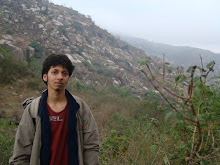
Amidst the snow capped mountains, beautiful valleys and sparkling rivers lies an electrified 550km long fence along the 740km line which happens to be one of the most disputed regions man kind has ever known – The Line of Control. Over the years, millions of people have been displaced from the surrounding region making it a humanitarian crisis.
History of the Kashmir Issue:
The day was October 25th 1947 when Maharaja Jari Singh, the ruler of the princely state of Jammu and Kashmir signed the Instrument of Agreement with the Govt. of India and chose to accede to India, and then Kashmir started claiming lives. Following the insurgency by the Pakistan militants and the tribesmen in the region, the National Conference worked with the Indian Army and this resulted in the first Kashmir war.
Violations of the UN resolutions:
In 1948 India moved the issue to the United Nations which brought a resolution stating that Pakistan would have no say in Jammu and Kashmir politics, India would retain a minimum military presence and the final disposition of the State of Jammu and Kashmir will be made in accordance with the will of the people expressed through the democratic method of a free and impartial plebiscite conducted under the auspices of the United Nations. India and Pakistan both agreed to the resolution but Pakistan didn’t withdraw its troops from the region.
Indo-Pakistan wars over Kashmir:
1947: The war ended resulting in the implementation resolution 47 by the United Nations and the Cease fire.
1965: Pakistan tried to infiltrate into Jammu and Kashmir and India responded strongly resulting in the largest tank battle since world war -2 and this ended with the UN ceasefire.
1999: Pakistan’s attempt to infiltrate into the Kargil region was foiled by the Indian army.
Terrorism and infiltration:
When Pakistan forces’ repeated attempts to invade the region were foiled by the Indian army, they turned towards militancy. Infiltration started right from when Kashmir chose to be a part of India and since then, the militancy has constantly increased resulting in unrest in the valley. Thousands have been murdered in the name of Kashmir; the Parliament attack and the recent terrorist attack on Mumbai shocked the world. The whole world is aware of Pakistan and ISI’s link with the terrorist organizations and yet we all have failed to dismantle the terror network.
Solutions:
1. The terror network in Pakistan has to be dismantled by the international community and we need to move a little ahead of the diplomatic ways.
2. Pakistan has to start focusing on peace and development. The issue cannot be resolved until they agree to the fact that terrorism is sponsored on their soil.
3. India has to realize that Pakistan is going to be our neighbor no matter what the crisis is. It should talk tough on terror and bring in International participation in dismantling Pakistan’s terror network. Development of Jammu and Kashmir should be the key focus of the Govt., not on paper but on the ground.
Hopefully at least after these critical tasks are completed, everybody starts considering the Kashmir’s voice and give back its lost identity. Over the years, millions of people have been displaced; thousands have lost their lives because the generations before us chose cultural and religious interests over growth, peace and harmony. We have lost our finest men on the front fighting wars but justice is still not done to them. Hope peace prevails.
** - I have tried to include a lot of facts rather than giving my views because I believe that it is only the Kashmir’s voice that should be heard and the rest of us should stop debating when it’s not helping the situation.

